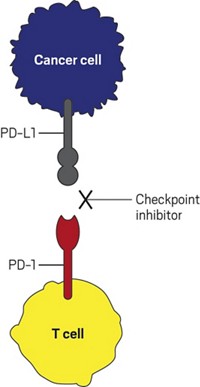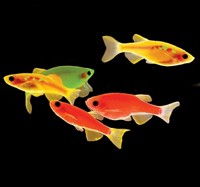Advertisement
Grab your lab coat. Let's get started
Welcome!
Welcome!
Create an account below to get 6 C&EN articles per month, receive newsletters and more - all free.
It seems this is your first time logging in online. Please enter the following information to continue.
As an ACS member you automatically get access to this site. All we need is few more details to create your reading experience.
Not you? Sign in with a different account.
Not you? Sign in with a different account.
ERROR 1
ERROR 1
ERROR 2
ERROR 2
ERROR 2
ERROR 2
ERROR 2
Password and Confirm password must match.
If you have an ACS member number, please enter it here so we can link this account to your membership. (optional)
ERROR 2
ACS values your privacy. By submitting your information, you are gaining access to C&EN and subscribing to our weekly newsletter. We use the information you provide to make your reading experience better, and we will never sell your data to third party members.
Biological Chemistry
Attacking Cancer With Light-Controlled Bacteria?
Synthetic Biology: A team of undergraduates program bacteria to release toxic payload in response to blue or red light, possibly paving the way for a new cancer therapy
by Laura Cassiday
January 21, 2014

As a possible new anticancer strategy, synthetic biologists have engineered bacteria to secrete a toxic protein that kills surrounding cells when exposed to blue or red light (ACS Synth. Biol. 2014, DOI: 10.1021/sb400174s). These bacteria could someday help doctors specifically attack cancer cells and limit damage to healthy ones, the researchers say.
Conventional cancer drugs often kill healthy cells along with malignant ones, leading to serious side effects. Also, it is difficult to control the dose of drug that actually gets to the cancer cells. Some researchers think that nonpathogenic bacteria could help with these problems. They see the microbes as good vehicles for drug delivery because they can easily manipulate the bacteria’s genetic circuitry to express proteins that seek out cancer cell targets and trigger cell death. Moreover, some strains of bacteria naturally find and penetrate solid tumors, possibly because they prefer the tumor’s acidic microenvironment.
However, to make the strategy work, synthetic biologists need to design ways to trigger the bacteria to release their toxic payload when they reach the tumor. Researchers at the University of Pennsylvania, led by Jordan S. Miller and Casim A. Sarkar, decided to use light as a trigger. The team, which included four undergraduate students, undertook this research as part of the 2012 International Genetically Engineered Machine (iGEM) competition, an international synthetic biology competition for undergraduates. For this work, they won the grand prize in the Americas East division of the competition.
The team chose the toxin cytolysin A (ClyA) as the cell-killing payload for their bacteria. When bacteria secrete ClyA, the toxin pokes holes in nearby mammalian cells, causing them to break apart, or lyse. As an anticancer therapy, doctors would inject patients with the engineered bacteria and then shine a light directly on their tumors to initiate cell lysis, says Miller, who is now at Rice University.
The researchers placed the gene for the toxin into a circular piece of DNA called a plasmid. This plasmid included DNA that triggers the expression of the ClyA gene when the bacteria are exposed to blue light.
After inserting the plasmid into Escherichia coli, the scientists plated the microbes on agar plates containing sheep’s blood. When the team placed the plates under blue light, the bacteria secreted their payloads and the toxins destroyed nearby sheep blood cells, as evidenced by clear halos surrounding the bacterial colonies on the red plates. No lysis occurred when the researchers incubated the plates in the dark or when the plasmids contained a gene for a nontoxic protein.
The amount of protein released by the microbes depended on the illumination time. Doctors could potentially exploit this feature to deliver the minimal amount of ClyA needed to treat a particular tumor and minimize toxic side effects, the researchers say.
Finally, because red light penetrates tissues deeper than blue light, the team also cloned the ClyA gene into a red-light-responsive plasmid. This plasmid worked similarly to the blue-light one.
Despite the promising results, Miller stresses that much work remains before the therapeutic bacteria are ready for the clinic, including testing the bacteria in animals.
“This is a clever idea, but the potential for putting it to use in vivo is a bit unclear at this point,” says Kevin H. Gardner at the City College of New York and the City University of New York Advanced Science Research Center. In particular, it will be important for the researchers to fine-tune the expression levels of the toxin and to investigate how quickly the system can be shut off after activation, he says. However, Gardner is impressed that the team of undergrads was able to get a complicated light-activated genetic circuit up and running in a single summer.




Join the conversation
Contact the reporter
Submit a Letter to the Editor for publication
Engage with us on Twitter